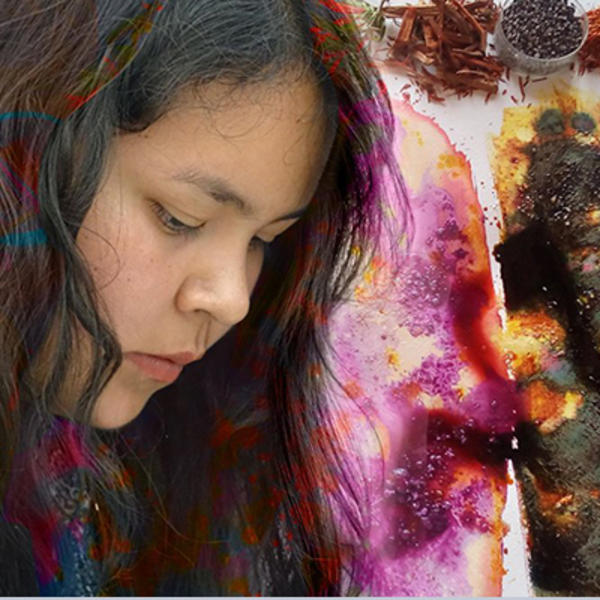Lucero Paniagua Ortuño was born in Cuernavaca, Morelos, Mexico. She received her Bachelor of Visual Arts degree from El Centro Morelense de las Artes (CMA; Morelos Center for the Arts) in 2017. Ortuño’s work delves deep into the extraction of pigments, dyes and the traditional techniques of the pre-Hispanic colonial era and the ways in which they are used by master craftsmen. Her research has focused primarily on practices within the states of Michoacán, Oaxaca, and Morelos. She explores colors, fibers and supports, working in a pictorial way and taking up implicit historical symbolisms in each pigment. Ortuño creates pigments and dyes extracted from; achiote (achiote); azafrán (saffron); cempaxúchitl(marigold); grana cochinilla (cochineal); curcuma (turmeric); muicle (honeysuckle); jamaica (hibiscus); palo de brasil(brazilwood), along with vegetable and mineral binders.
While a senior at CMA, she initiated research on organic pigments informed by Mexican traditions and exhibited her series “Orgánico” (Organic) at the Museo de la Ciudad de Cuernavaca (MuCIC; Cuernavaca City Museum). That same year she participated in the 10th Biennial of the Pacific with her series entitled, “Origen” (Origin) exhibited in Chilpancingo, Acapulco and Taxco de Alarcón, all in the state of Guerrero, Mexico. Her 2019 solo exhibition, entitled “Transmutaciones” (Transmutations) brought together research, exploration and pictorial executions incorporating dye and pigment extractions from cochineal; palo de brasil; achiote; turmeric; beet; and Mexican honeysuckle on paper, wood, and textiles.
In 2018, Ortuño held a workshop for children in Zitácuaro, Michoacán, on how to use knowledge through painting and collective memory based on cave paintings discovered near her home. In 2019 she conducted a workshop at La Casona Spencer Museum in Cuernavaca, on pigments and dyes in the plastic arts and the pre-Hispanic and colonial knowledge on extractions and how they may be applied in the arts.
